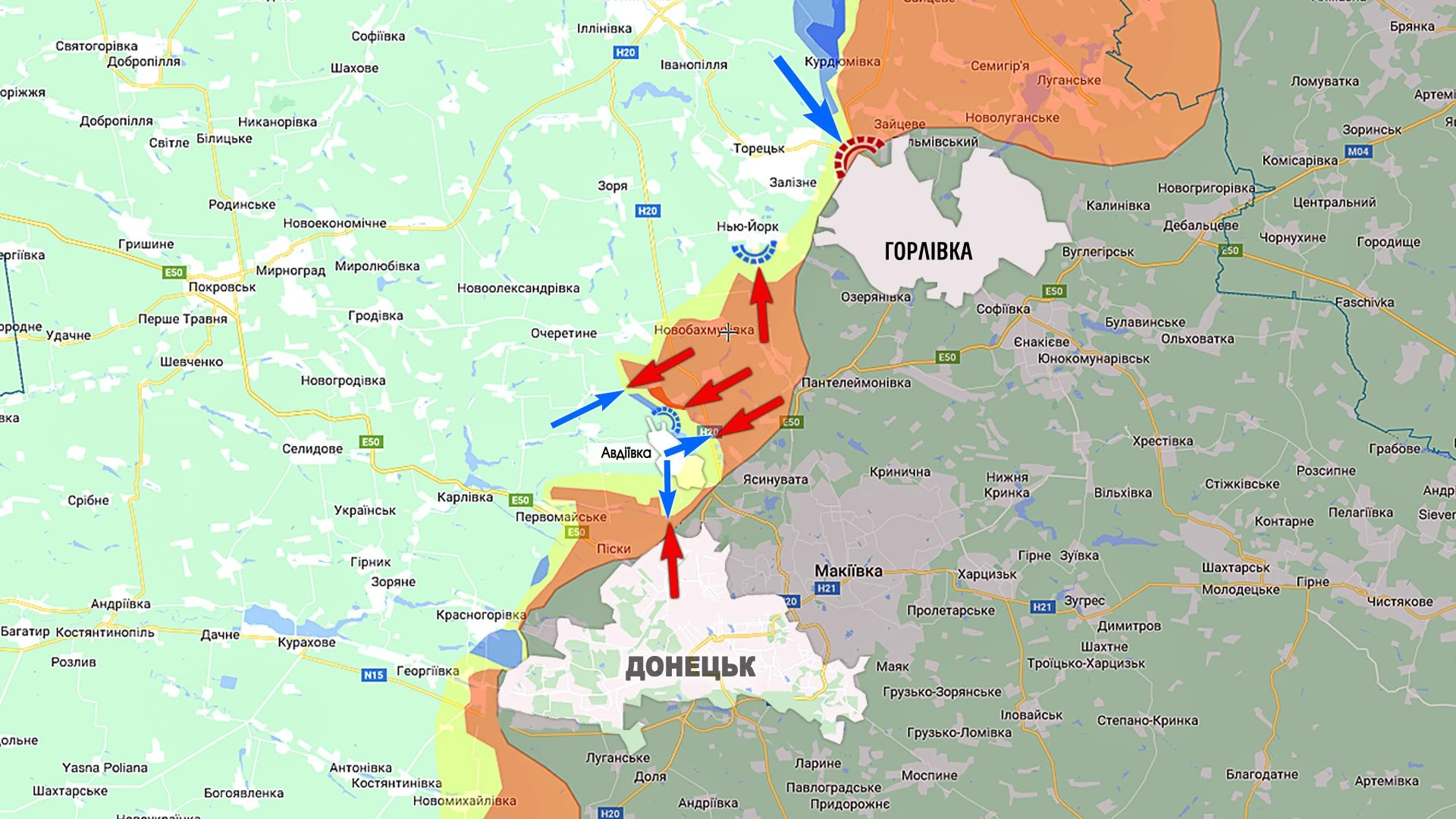
US military aid package for Ukraine funded by Pentagon's accounting error - military expert Zgurets
In the last fiscal year and this year, the US arms supplies to Ukraine were valued at the cost of new models to be compensated to the US army. That is, not the actual value of the used military equipment that was transferred to Ukraine
A new package of US military aid
I'll begin with the newly announced USD 200 million package of US military aid on August 8. The weapons included in this aid package are being provided through the Presidential Drawdown Authority, which means they are sourced from the US Department of Defense's stockpile. The forthcoming package will encompass ammunition for systems such as Patriot and HIMARS, as well as Javelin, TOW, and AT4 systems.
Despite the relatively modest size of this new aid installment, it stands apart from previous ones due to its funding source—a Pentagon accounting error. Over the last fiscal year and the current year, the valuation of US arms sent to Ukraine has been based on the costs of new models to be compensated to the US Army, not reflecting the actual worth of the used military equipment provided to Ukraine. This cumulative calculation has reached a total of USD 6.2 billion. Correspondingly, a substantial amount of military aid should correspond to this figure. Notably, the US fiscal year concludes on September 30. While these billions won't be disbursed immediately, they are slated for next year, including the new aid package presently under deliberation in the United States. The package for the next fiscal year will also include the supply of a significant number of weapons.
German Taurus missiles
In addition to the usual American-made equipment, we have a chance to get German Taurus missiles. These missiles with a range of 500 kilometers have interesting nuances. From a technical point of view, Taurus is similar to the British Storm Shadow missile, the French SCALP-EG, because it is manufactured by MBDA. But the issue is that despite the fact that some Ukrainian politicians have already announced that the issue of Taurus delivery has been resolved, these are actually premature statements. If we read the German press carefully, it says that Germany will deliver these missiles after the Americans deliver ATACMS. However, there are other circumstances. But in any case, we understand that Germany sometimes slows down, but still delivers what it can deliver. This was the case with Leopard and other systems. And I remain optimistic that out of the 400 missiles in the Bundeswehr, 150 are in use, and the rest will need to be updated. So we have the prospect of getting these missiles to be used on the battlefield against our enemy.
The front line
Against the backdrop of Western assistance, the front line is held together by the courage and endurance of Ukrainian soldiers, where each section of the front, with all its peculiarities, is extremely important.
Yehor Firsov, a soldier with the Ukrainian Armed Forces, said that a positional war is underway. The fighting continues with artillery and shelling. Russia is hitting positions and civilians. The Ukrainian Armed Forces are also hitting Russian forces hard, but with much more precision.

In the Horlivka sector, the battle for control of elevated positions has started, with Horlivka itself being a continuous high ground. The command has issued an objective to engage in counter-battery actions, as Russia’s artillery is consistently active due to their significant artillery resources and ammunition stockpile. For successful operations, Ukrainian defenders need to conduct a counter-battery strategy or tactics in the area.
The Ukrainian Armed Forces serviceman said he was fighting between Avdiivka and Bakhmut, where the intensity of Russian attacks is low. Above his position, near Bakhmut, the strategic initiative is in favor of the Ukrainian Armed Forces. There, the Defense Forces are making progress in recapturing positions near Klishchiivka. Below his positions is Avdiivka, where Russian troops’ assaults are near-constant and remind of the situation in Bakhmut six months ago. There are real battles going on in waves. Russian forces are suffering huge losses, with recent losses numbering in the hundreds.
Firsov believes that Avdiivka is Russia’s number one target due to its pivotal role in providing complete fire control over Donetsk. The Russian forces find themselves vulnerable in Donetsk, as the city becomes a target for shelling from Avdiivka. Situated approximately 15-20 kilometers from Donetsk, Avdiivka serves as a gateway to the city, featuring key railroad junctions and roads, currently mined, that lead to Donetsk. It's of strategic significance for the enemy to prevent any encroachments on Donetsk. Just as we emphasize the significance of Crimea, an incursion by the Ukrainian Armed Forces into Donetsk would be a significant blow, considering its proximity and importance—possibly on par with the Armed Forces' efforts in Crimea.
Countering Russian electronic warfare
According to research conducted by the British Institute, Russia is actively advancing its electronic warfare (EW) capabilities, which are evident on the battlefield. The British report highlights that Russia deploys a robust electronic warfare system approximately every 10 kilometers, and even smaller tools like trench electronic warfare systems are now widely deployed along the Russian front to counter Ukrainian drones. Essentially, Russia is in the process of expanding its electronic warfare systems, which were already considered quite effective even prior to the war. Colonel Andriy Krutykh, a senior researcher at the Central Scientific Research Institute of Armament and Military Equipment of the Armed Forces of Ukraine, will provide further insights into the intricacies of these Russian systems.
Andriy Krutykh noted that the impact of electronic warfare is very significant today. Prior to the large-scale invasion, Russia had enough high-power electronic warfare equipment, as well as some developments for low-power electronic warfare equipment, the so-called trench electronic warfare. First of all, such low-power means are aimed at combating UAVs, which have completely changed the course of warfare in modern conditions. These devices can be divided into two types: the first is manufactured by Russian military-industrial complex enterprises, and the second is created by a mass of volunteer organizations. However, against serious unmanned aerial vehicles, electronic warfare equipment manufactured by industrial enterprises is used. Over the past six months, their quantity and quality have been increasing in Russia, and this is a major threat.
The colonel explained how to counteract enemy electronic warfare. The main countermeasure is radio intelligence, detection of enemy electronic warfare equipment and destruction by means of fire first.
The senior researcher believes that Ukraine's scientific potential is much higher than Russia's. Presently, industrial producers who previously catered to the requirements of the Ukrainian Armed Forces prior to the full-scale invasion remain active, and new enterprises are joining this sector. The initiative of the Ministry of Digital Transformation, the Ministry of Defense, and the Ministry of Internal Affairs to create the BRAVE1 platform, which allows almost all market participants to develop and implement their developments, is very good. Electronic warfare of the Ukrainian Armed Forces is the future, and Russia will be crushed by Ukraine’s electronic warfare.
Krutykh emphasized the necessity of adopting a comprehensive strategy to counter enemy UAVs. While Lancets themselves may appear as simple “kamikaze” drones, their coordinated actions are orchestrated by a ZALA reconnaissance drone or potentially an Orlan-10 or Orlan-30 drone. These reconnaissance drones operate beyond the reach of Ukrainian electronic warfare systems. Positioned at distances of 15-20 km from the contact line, they surveil Ukrainian territory up to 25-30 km in depth and dispatch the Lancets. Moreover, Lancets also have a combined control system, both radio control channels and, at the final stage, this UAV can use its built-in guidance systems. Consequently, combating these drones requires an integrated approach. Addressing the Lancets necessitates first countering Orlans, a task that Ukrainian Armed Forces are already undertaking. Work is also ongoing to address the challenge posed by Lancets, although I cannot delve into the details at this time.
To summarize Mr. Krutykh's remarks, I would say that we must rely on our own electronic warfare systems, expanding the capacity of our defense enterprises and creating new models that will keep a protective shield over our battlefield, crushing enemy drones.
- News













































